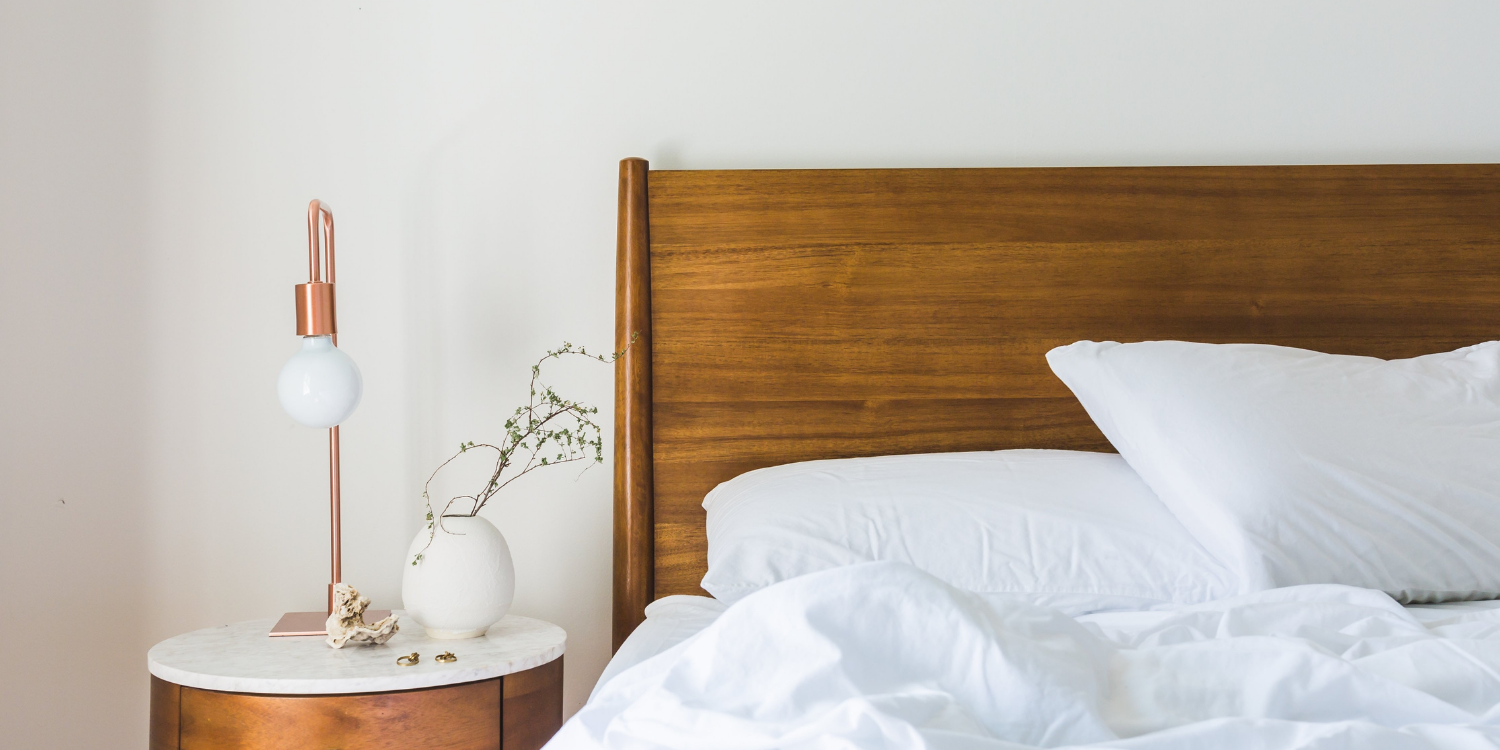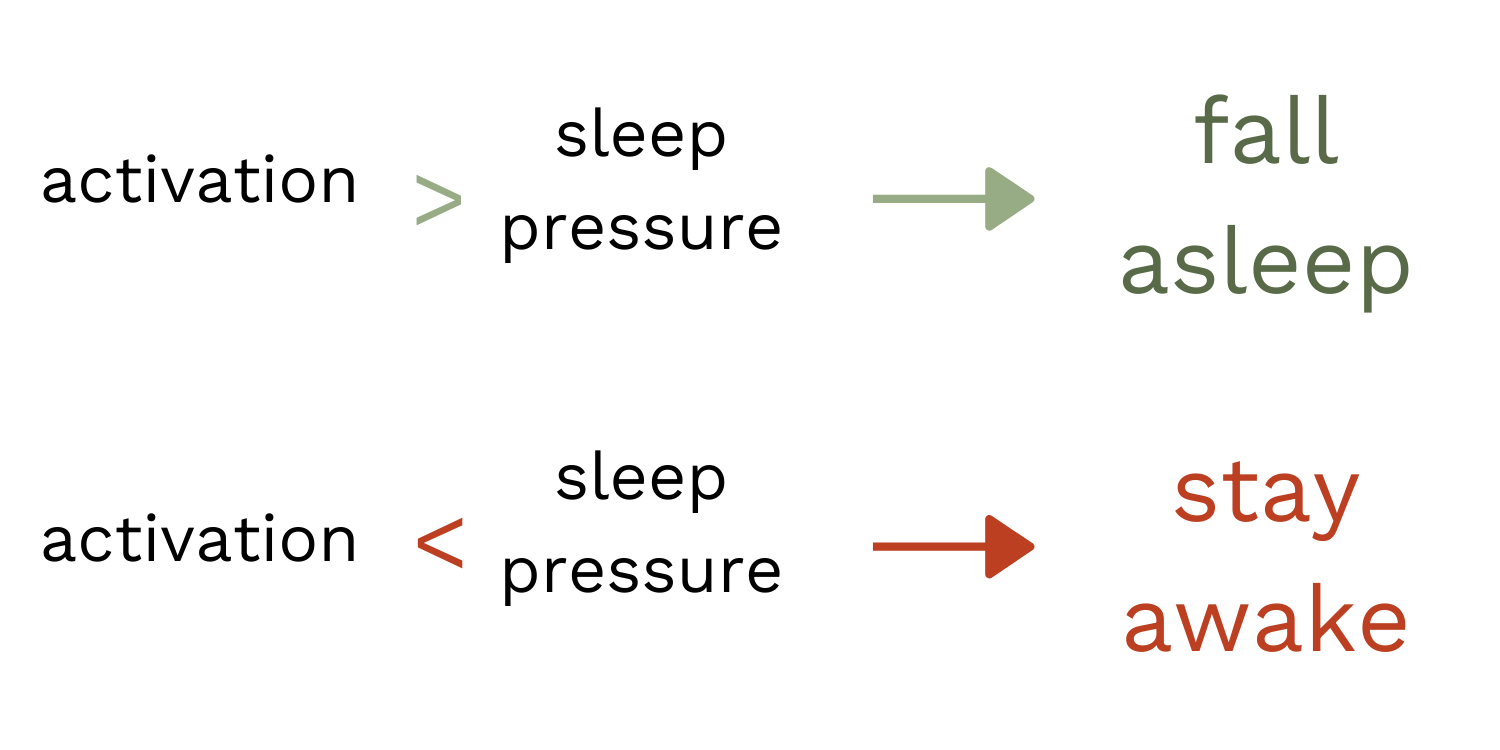
Wind Down to Sleep Better
Protect your buffer zone
Our body’s ability to sleep follows a simple model. When “sleep pressure” is higher than “activation”, we fall asleep. Otherwise, we stay awake.

When we want to fall asleep, there are two ways we can increase sleep pressure and make it higher than activation.
- we can strengthen the circadian rhythm
- we can increase sleep drive by staying awake longer
Otherwise, we need to work on decreasing activation.
What is “activation”?
Activation refers to general alertness, which can be physical, emotional, or cognitive. Activation can feel like excitement, problem-solving, worrying, a desire to move, or just the experience of thoughts running through your head.
We can also help ourselves fall asleep by decreasing activation. Humans are not machines (so we do not have a simple on/off switch). Our brains need time to transition from the active go, go, go state of the day to a rest and rejuvenate nighttime mode.
Create a buffer zone for sleep
Here’s how to get better rest: create a buffer zone of 30 minutes to an hour before bed. What you choose to do during this time is personal to you but should be enjoyable and relaxing.
Here are some things not to do in the buffer zone:
- 🚫 Don’t respond to one more email. Feel free to ignore messages during this time.
- 🚫 Don’t make tomorrow’s to-do list. If you like, write that list before the buffer zone and know that you can work on those tasks tomorrow. Now is the time to rest.
Take some time to brainstorm some buffer zone activities you enjoy. For example:
- 📖 Read a nourishing book
- 🎵 Listen to music
- 🧘 Yoga or gentle stretching
- 🛀 Take a hot bath
- ⛩️ Dedicate time to a meditation practice
- 🌵 Look in on houseplants
References
Stanford Health Care. Sleep-Interfering Arousal/Activation. Retrieved March 21, 2021
Shuni. (2020) How to Achieve Deeper Sleep with a Buffer Zone. Retrieved March 21, 2021
